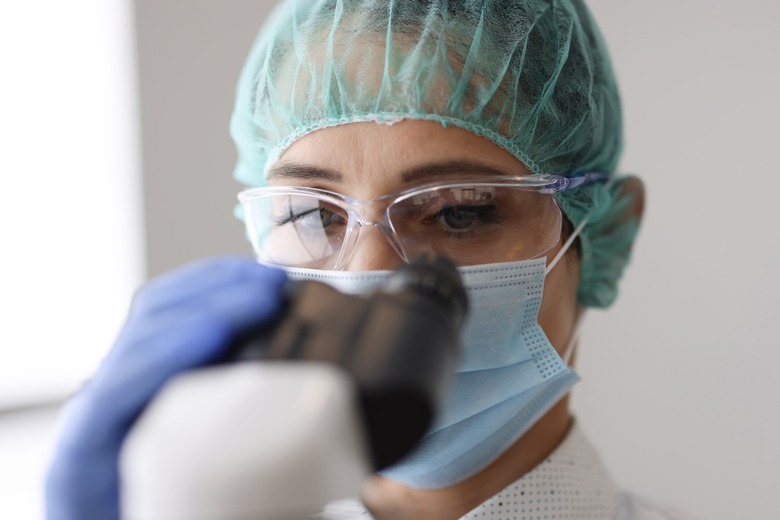What Is Bacteria Homeostasis?
Homeostasis refers to self-regulating processes that living organisms use to maintain their internal stability, thus guaranteeing their survival. Bacteria can also self-regulate, adjusting to the ever changing environmental conditions that surround them. The main homeostatic processes that guarantee the survival of bacteria include iron and metal homeostasis, pH homeostasis and membrane lipid homeostasis.
Iron Homeostasis
Iron Homeostasis
Iron is vital to most bacteria, but in high quantities can be toxic. Bacteria can achieve iron homeostasis even in environments with low quantities of this element. In this situation, some bacteria use specialized proteins, which maximize the absorption of iron. Pathogenic bacteria living in the human blood can maintain their iron homeostasis by using the host's haemoglobin or other iron-complexes. Bacteria also have proteins, such as ferritine, which they used to store iron as an intracellular reserve. When in environments with toxic levels of iron, bacteria use their iron detoxification proteins (Dps), which protect their chromosome from damage.
Metal Homeostasis
Metal Homeostasis
In addition to iron, bacteria can sense the external levels of other elements, such as lead, cadmium and mercury. Metal sensors are complex proteins found in some bacteria, which can sense and regulate the internal levels of both toxic heavy metals and beneficial metal ions. The human pathogen Mycobacterium tuberculosis and the the soil dwelling Streptomyces coelicolor have more than ten metal sensors.
PH Homeostasis
PH Homeostasis
The level of acidity of a substance is measured through its pH. Although most bacteria species require external pH levels near neutral or 7, bacteria called extremophiles can live in environments with pH values below 3, or acidic, or above 11, or alkali. Bacteria have mechanisms for sensing external changes in pH. The complex pH homeostasis of most bacteria enable them to tolerate external pH values that are different to their internal levels of acidity.
Membrane Lipid Homeostasis
Membrane Lipid Homeostasis
The membrane of bacteria contains different types of proteins and lipids. Bacteria can adjust the lipid composition of their membranes, thus altering their permeability. The ability of bacteria to control the lipid constitution of their membranes is called membrane lipid homeostasis and allows them to survive in a great range of environments.
References
- Encyclopaedia Britannica: Homeostasis
- Nature Reviews Microbiology: Membrane Lipid Homeostasis in Bacteria; Yong-Mei Zhang et al.; March 2008
- University of Nebraska – Lincoln: PH Homeostasis in Lactic Acid Bacteria; Robert W. Hutkin et al.; 1993
- Nature Reviews Microbiology: Molecular Aspects of Bacterial pH Sensing and Homeostasis; Terry A. Krulwich et al.; May 2011
- "Biochemistry"; Elucidation of The Functional...; Y Wang et al.; August 2010
Cite This Article
MLA
Zinni, Yasmin. "What Is Bacteria Homeostasis?" sciencing.com, https://www.sciencing.com/bacteria-homeostasis-8706627/. 8 July 2011.
APA
Zinni, Yasmin. (2011, July 8). What Is Bacteria Homeostasis?. sciencing.com. Retrieved from https://www.sciencing.com/bacteria-homeostasis-8706627/
Chicago
Zinni, Yasmin. What Is Bacteria Homeostasis? last modified August 30, 2022. https://www.sciencing.com/bacteria-homeostasis-8706627/
